Years after putting it off, I finally checked off these 'magical' islands my bucket list
I had been wanting to visit the Galapagos for years. So, why take the bucket list trip now?
Like many post-COVID Americans, I was eager to travel this summer, but every place seemed as if it would be hot or crowded. But In April, when my sister Janice suggested we finally go to the Galapagos, I immediately said yes.
The Galapagos, an archipelago of small islands 600 miles off Ecuador, were made famous by Charles Darwin. It was there, by observing differences in native species in 1831, where he honed his understanding of evolution. But these islands are equally well known as a unique natural kingdom teeming with wildlife – giant tortoises, unique species of birds, huge iguanas, even penguins.
Is a wellness retreat worth it? I spent a week surfing with women to find out.
The Galapagos had been at the top of my bucket list for many years. But life, as it so often does, got in the way – work, family, other trips.
Once the decision was made, it was surprisingly easy to make arrangements. Because everything in the Galapagos is highly regulated, our choices were limited – in a good way. Other than arranging our flights to Ecuador, we basically had two decisions to make.
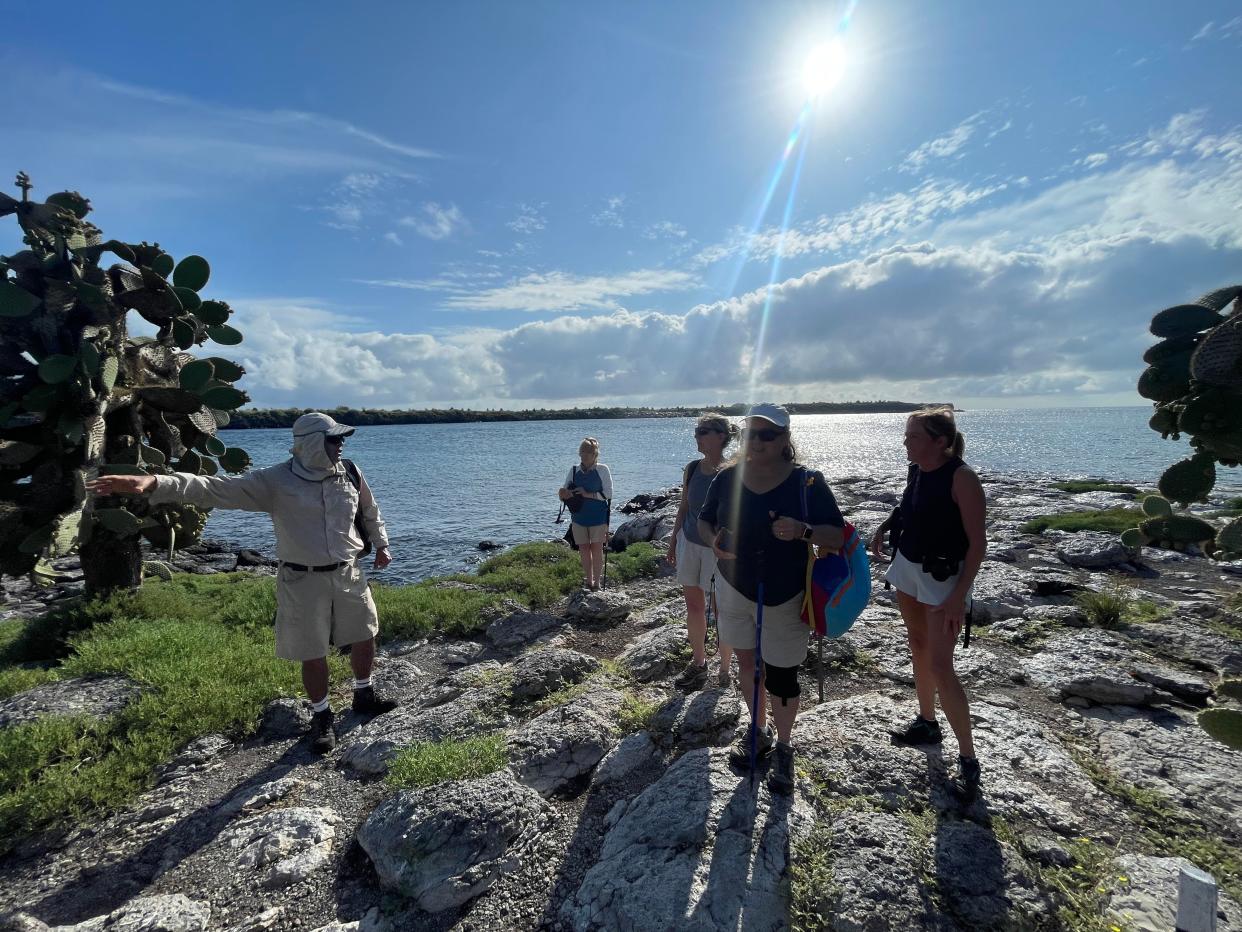
◾First decision: Choose a sleep-aboard ship or be a “day-tripper.” On a sleep-aboard ship, you visit more islands with fewer people and have more interaction with wildlife. As a day tripper, you stay on one or two islands and spend hours on ferries to take day tours to the more limited islands that allow day visitors.
We wanted to see as much as we could and didn’t want to waste precious daylight hours in transportation. We chose a sleep-aboard ship.
◾Second decision: Which ship? To protect the wildlife and fragile environment, Ecuador greatly restricts the number and size of ships in the Galapagos. The few largest ships hold up to 100 passengers. Most are small ships with fewer than 32 passengers.
I knew I wanted a small ship, but I also wanted comfortable quarters. I also wanted excellent naturalist guides with a more personal passenger-to-naturalist guide ratio. That led me to Ecoventura, one of the leading outfitters in the Galapagos, whose three ships are limited to 20 passengers. In the Galapagos, each guide is allowed to serve up to 16 tourists, but Ecoventura offered a maximum of 10 guests to every naturalist. Finally, I loved the fact that every one of Ecoventura’s well-appointed staterooms has massive windows instead of portholes.
Six weeks after deciding on the Galapagos, my sister and I arrived in Quito, Ecuador. From there, we flew to San Cristobal Island, where our two naturalists – Billy and Martin – met us and the other guests. We were whisked to a Zodiac (a firm motorized raft) to be taken to our home for the week – the ship aptly named Evolve. We lucked out. Evolve was brand-new – entering service only in March 2023. And instead of 20 passengers, we had only 14. Very personalized service indeed!
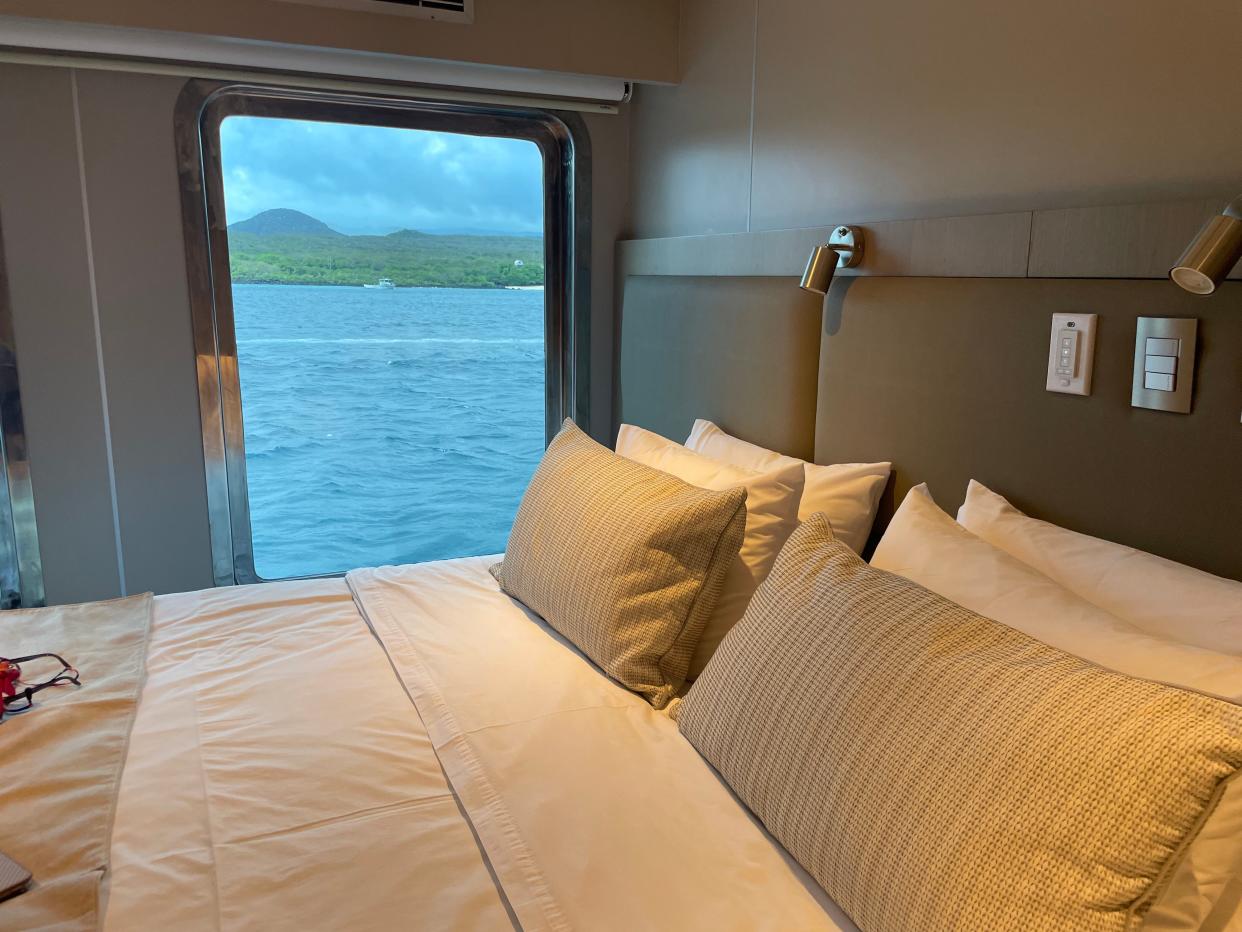
Why the Galapagos?
“Magical” – that’s the word I’ve been using to describe the Galapagos ever since I returned. The main attraction, of course, is the wildlife. In the Galapagos, I was awed by the incredible beauty and diversity of birds and reptiles − and how close you can get to them without disturbing their habitat.
Moreover, in the Galapagos, the animals really do come first. Ecuador was the first country in the world to include the rights of nature in its constitution, and there are numerous restrictions to protect the fragile ecosystem. These include the number of visitors allowed each year, the number and size of boats, where and when tourists are allowed, and the requirement that a guide must be with visitors at all times in protected areas.
I absolutely fell in love with one of the birds most associated with the Galapagos: the blue-footed boobies. Forget the funny name: These birds are absolute charmers. With their teal flippers, they bounce around like a child wearing swim fins for the first time.
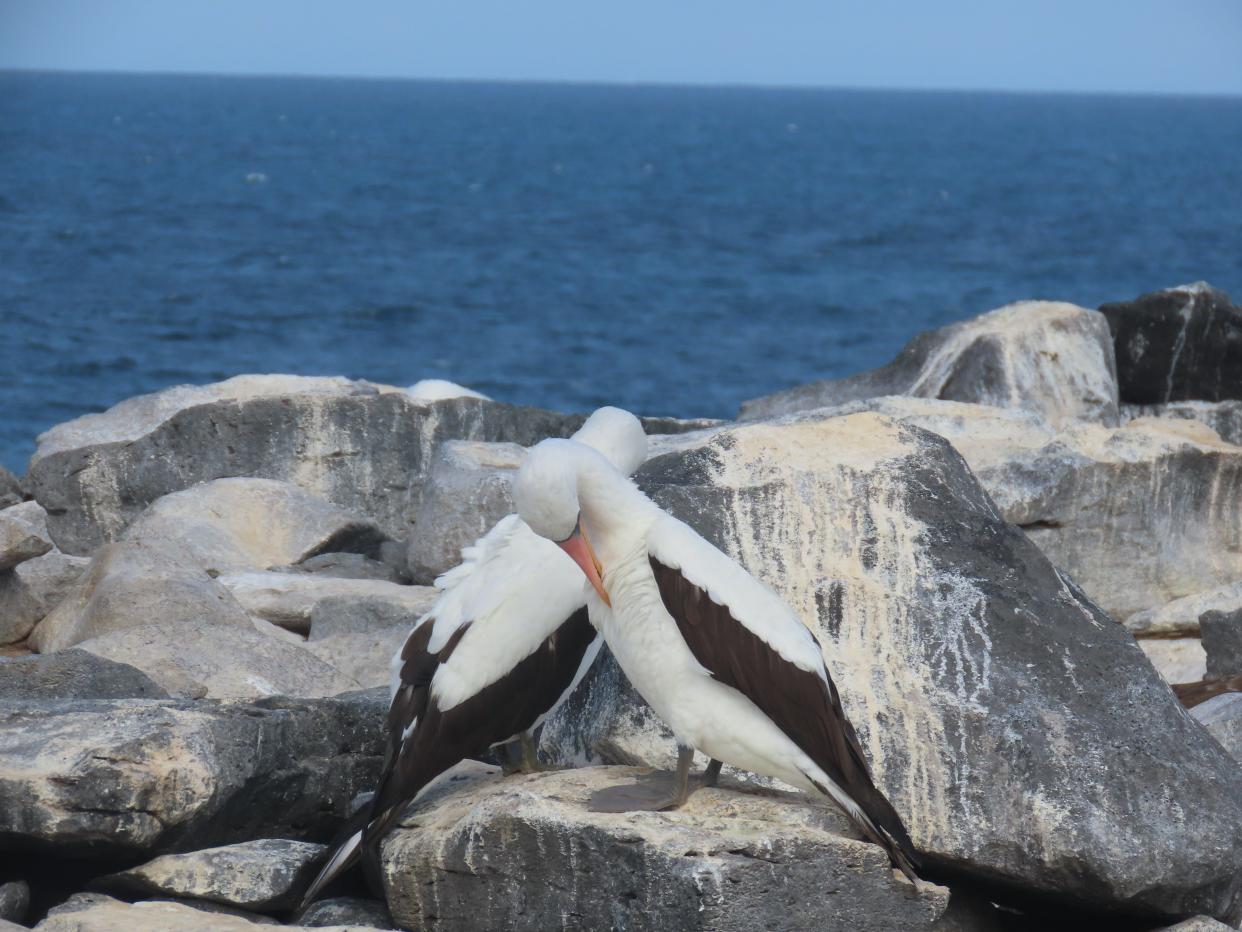
The waved albatross travel hundreds of miles to nest on the Galapagos island of Espanola. They were beautiful. The land iguanas – unattractive in close-ups pics (they’d never be Instagram stars) have a lively community. Their colors grow on you.
Hundreds of sea lions appear to own title to the Galapagos. They move in everywhere and anywhere they want. They’re descendants of the California sea lions that laze on piers in San Francisco’s Fisherman’s Wharf, but in the Galapagos, they’re lively and lovely personalities, frolicking with snorkelers, posing for pictures, "hugging" one another. One swam just inches from me as I was snorkeling.
Unexpectedly, there were also little penguins – the most northern penguins anywhere in the world. Adorable! And I was impressed by the Sally Lightfoot crabs with their neon orange, fluorescent blue and yellow shells, clambering up rocks. We saw dolphins and pilot whales and white-tipped sharks. Of course, we also saw Darwin finches, the little unobtrusive bird that has evolved into different species on different islands, which helped Darwin understand how evolution works.
I wanted to see wildlife – and boy, was I not disappointed!
How was the ship experience?
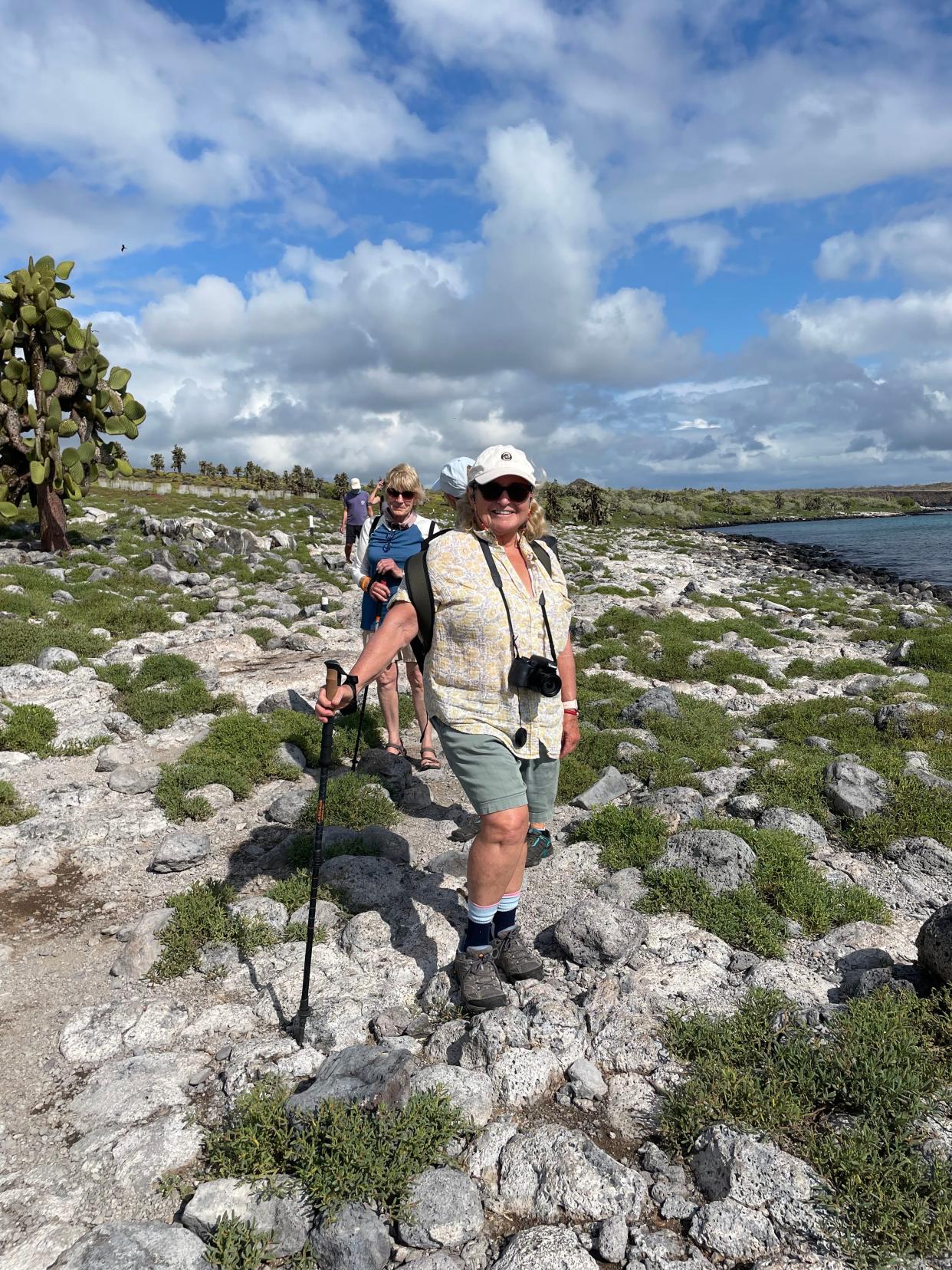
My sister was worried about seasickness. (Fortunately, I don’t get seasick.) But before she left the U.S., she got a prescription for the “patch,” and she never once experienced any seasickness.
Billy and Martin, our naturalists, were exceptionally knowledgeable and, like every Galapagos guide, were not only local and licensed but had to take exams every two years.
The rest of the Ecoventura staff was likewise attentive and skilled. We always felt safe, even catered to. There was always a hand to help us get in and out of the Zodiacs, eyes on us as we snorkeled, and hot chocolate waiting when we returned.
Why now?
OK, so why did I finally decide to go to the Galapagos if I had managed to put it off all these years?
I felt I had better hurry.
I wanted to be able to fully participate in the hikes, snorkeling and other activities that make the Galapagos experience extra-special. You don’t have to be an athlete, but you should be fairly fit. Frankly, I’m not getting any younger.
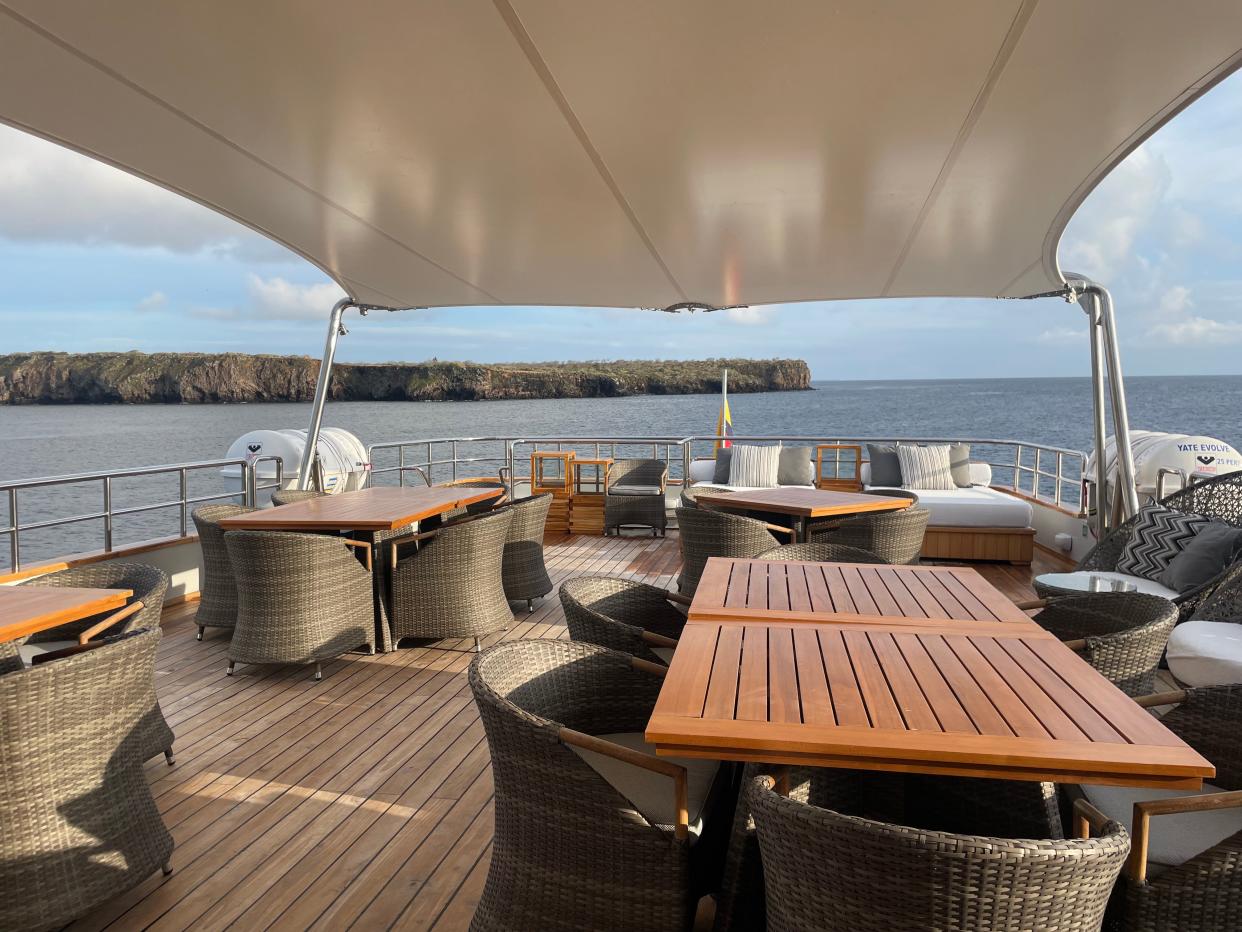
Next, the Galapagos face some very real threats. Climate change is greatly affecting the fragile ecosystem. Most of these islands have little natural fresh water or foliage. The animals that live on each island have evolved to fit current conditions. Even small changes in temperature or the amount of rain challenge habitats and animal populations.
Then there’s the illegal giant fishing ships. These massive floating factories stay just outside the 200-mile protected marine preserve during daylight, then illegally turn off their trackers at night to move in to harvest thousands of pounds of fish each day. They’re oblivious to what they catch in giant nets – including endangered species.
Finally, I realized the Galapagos was truly one place I didn’t want to miss in this lifetime. I’ve seen a lot of world-famous cities, and if I missed one more, I’d be OK. But missing the Galapagos? I’d definitely regret that.
After all, it’s magical. Bucket list? Check!
This article originally appeared on USA TODAY: When is the best time to go to Galapagos islands? How my trip went.